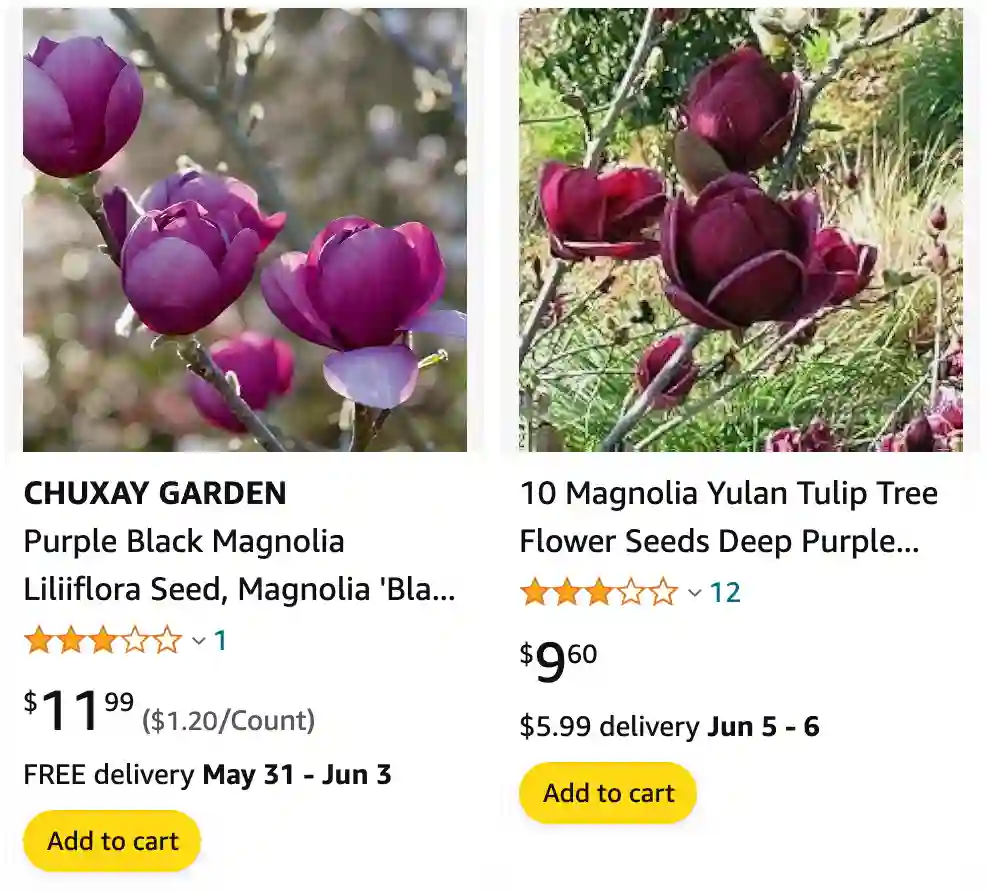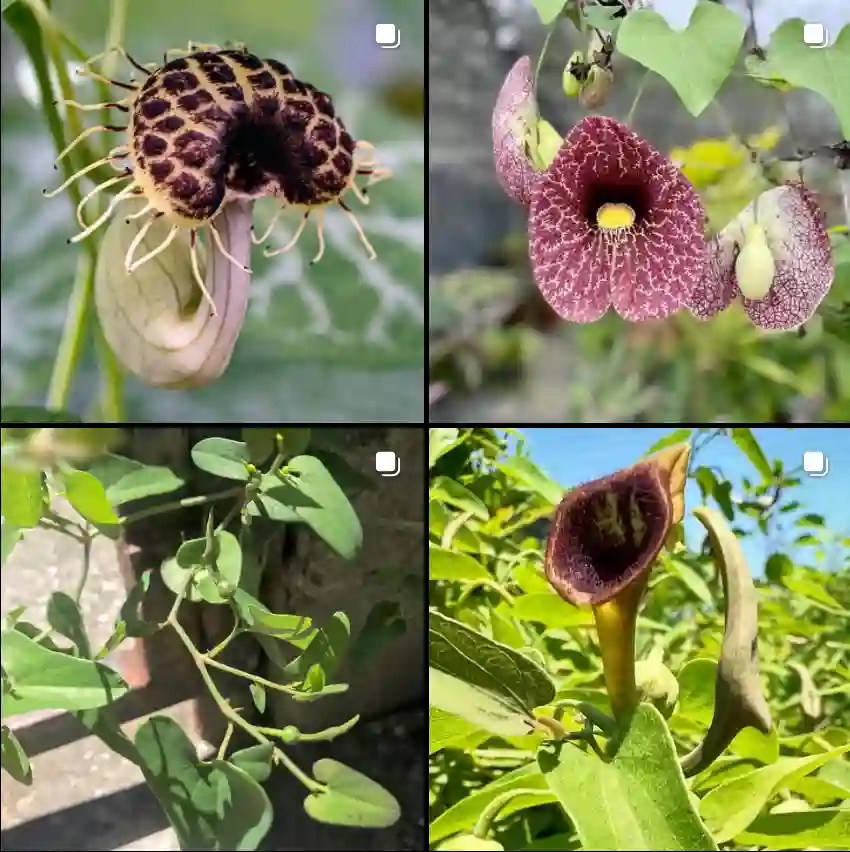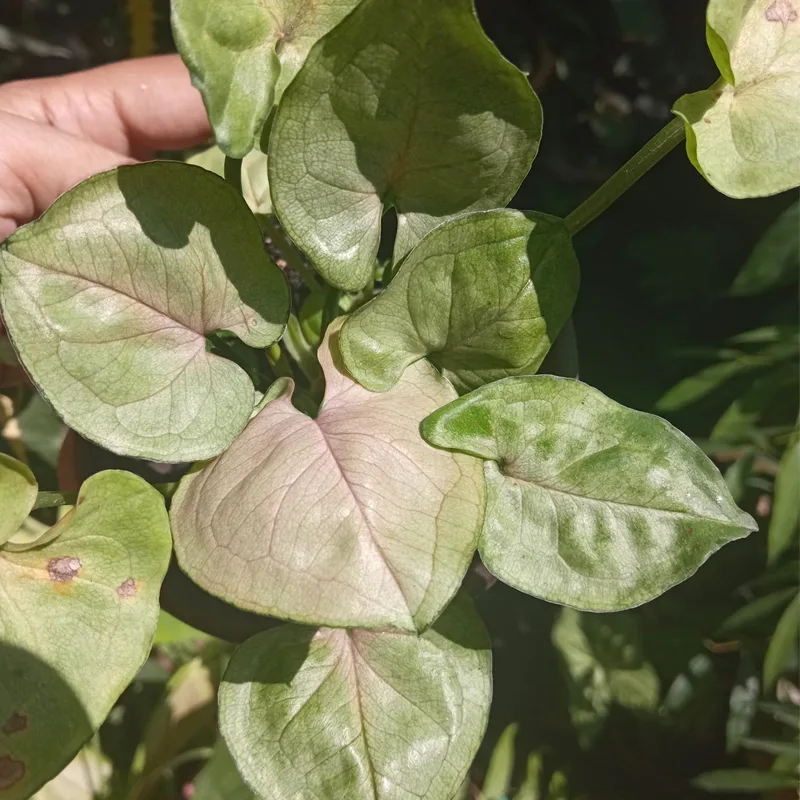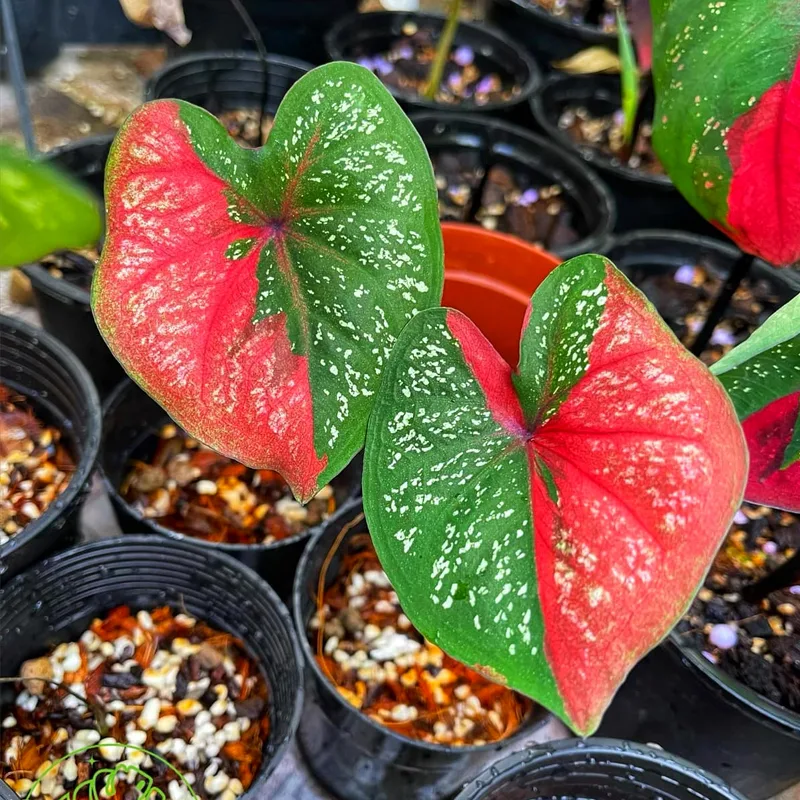
Magnolia Black Tulip vs Genie
Comparing Magnolia Black Tulip with Genie, I find the deep burgundy blooms of Black Tulip to be richer and more striking in my garden.
Magnolia Vulcan vs Black Tulip
Between Magnolia Vulcan and Black Tulip, Vulcan’s fiery red flowers always seem to grab more attention and bring a bold vibrancy that Black Tulip doesn’t quite match.
Felix Jury vs Black Tulip Magnolia
Felix Jury vs. Black Tulip Magnolia is a tough call, but I lean towards Felix Jury for its larger, fuller blooms that create a more dramatic display.
371 Species in Genus Magnolia
How big do Black Tulip Magnolias grow?
Black Tulip Magnolias can grow to be quite substantial, reaching heights of about 15 to 20 feet, and sometimes even up to 25 feet under the right conditions. I remember seeing a mature one in a friend’s garden; it was impressive, almost like a small tree rather than a shrub, with a spread of about 10 to 12 feet.
How to plant a Black Tulip Magnolia tree?
Here’s a guide on how to plant a Black Tulip Magnolia tree:
Choosing a Location:
- Sunlight: Black Tulip Magnolias prefer full sun to partial shade. They’ll do well with at least 6-8 hours of direct sunlight daily. Avoid areas with strong winds that can damage flowers and buds.
- Soil: They are adaptable to various soil types (clay, loam, or sand) but perform best in well-drained, acidic soil (pH between 5.0 and 6.5). If your soil is heavy clay or very sandy, amend it with organic compost or well-rotted manure to improve drainage and texture.
Planting:
- Timing: The best time to plant a Black Tulip Magnolia depends on your climate:
- Warmer Climates: Plant in late fall or winter when the tree is dormant.
- Colder Climates: Early spring is ideal for planting when the danger of frost has passed.
- Digging the Hole: Dig a hole 2-3 times wider than the root ball of your magnolia and just as deep.
- Root Ball: Gently loosen any pot-bound roots.
- Positioning: Place the magnolia in the hole, ensuring the root crown (where the stem meets the roots) sits slightly above the surrounding soil level.
- Filling the Hole: Backfill the hole with the excavated soil mix, removing air pockets by tamping it down gently.
- Watering: Water thoroughly to settle the soil around the roots.
Aftercare:
- Watering: Water regularly, especially during the first year or two, to keep the soil evenly moist but not soggy. As the tree matures, watering needs will decrease.
- Mulching: Apply a layer of mulch around the base of the tree (2-3 inches thick) to retain moisture, regulate soil temperature, and suppress weeds. Keep mulch a few inches away from the trunk to prevent rot.
- Fertilizing: You can fertilize your Black Tulip Magnolia with a balanced fertilizer in early spring before new growth appears. Avoid over-fertilizing, as this can encourage excessive foliage growth at the expense of flowers.
- Pruning: While not strictly necessary, you can prune your Black Tulip Magnolia for shaping or size control. Prune in late winter or early spring before new growth appears.
Additional Tips:
- Container Planting: Black Magnolias can be grown in large containers (at least 60cm diameter) on a patio, provided they receive enough sunlight and proper drainage.
- Root Barrier: Consider planting a root barrier around the planting hole if you’re concerned about the magnolia’s roots encroaching on sidewalks or driveways.
How fast does Black Tulip Magnolia grow?
I’ve noticed that Black Tulip Magnolias tend to grow at a moderate rate, not too fast but steady enough to make noticeable progress each year. Mine has grown about a foot or so per year, which I found satisfying since it’s enough to see changes but not so rapid that it becomes overwhelming to maintain.
How often to water Black Tulip Magnolia tree?
Watering my Black Tulip Magnolia tree is something I pay close attention to, especially in its first few years. I water it deeply once a week, making sure the soil stays consistently moist but not waterlogged. During hot, dry spells, I sometimes increase the frequency to twice a week to ensure it doesn’t dry out.
Is Black Tulip Magnolia evergreen?
Black Tulip Magnolias aren’t evergreen, which means they do lose their leaves in the fall. I actually love this seasonal change; it adds a different kind of beauty to my garden in every season, from the vibrant blooms in spring to the stark branches against a winter sky.
What to plant with Black Tulip Magnolia?
When it comes to companion planting, I like to pair my Black Tulip Magnolia with perennials like hostas and ferns. These plants thrive in similar conditions and provide a lush, green understory that complements the magnolia’s dark, dramatic flowers beautifully.
When does Black Tulip Magnolia bloom?
I eagerly look forward to my Black Tulip Magnolia blooming each year. It typically bursts into bloom in early spring, around late March to April, depending on the weather. The deep, rich tulip-shaped flowers are a stunning sight and one of the highlights of my garden’s blooming season.
Where to buy Black Tulip Magnolia?
Finding a Black Tulip Magnolia to buy wasn’t too difficult for me. I checked out a few local nurseries and eventually found one that had a good selection. Alternatively, I noticed that there are several reputable online nurseries that offer healthy saplings if you’re comfortable with ordering plants online.
Where to plant Black Tulip Magnolia?
Choosing the right spot to plant my Black Tulip Magnolia was key to its success. I opted for a location with plenty of sunlight and good air circulation. It’s somewhat sheltered from harsh winds, which can damage the delicate blooms. The spot I chose also had enough space for it to grow to its full potential without being crowded by other large plants or structures.
If i die, water my plants!



